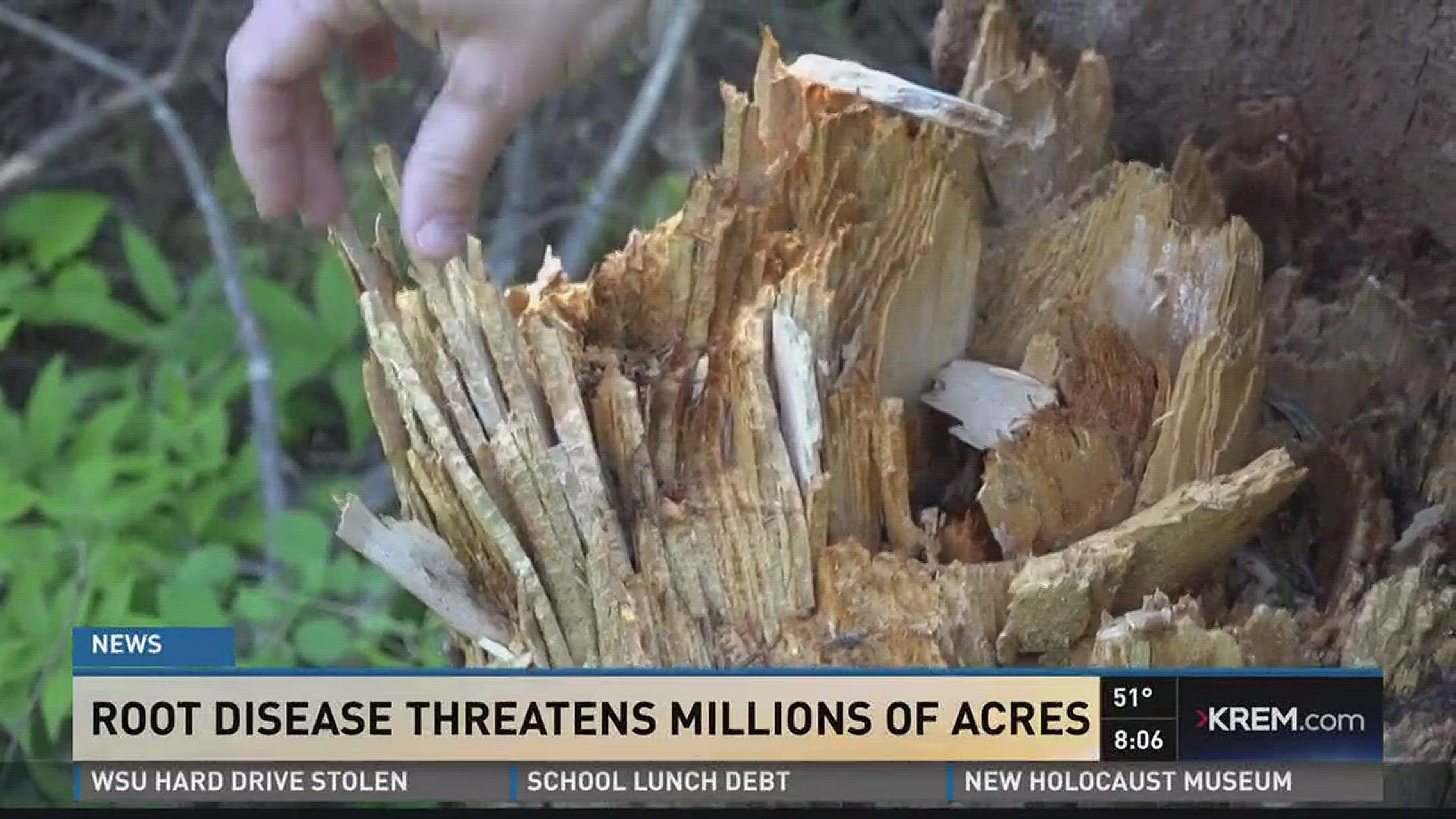INLAND NORTHWEST – The bark beetle is often the first to blame for damage to local forests, but there is another silent killer: root disease.
U.S. Forest Service plant pathologist Christy Cleaver took KREM 2’s Rob Harris in the a North Idaho forest to see the damage first hand.
“What you’re seeing here is a patch of dead trees that have died because of a root disease. And root diseases predispose trees to attack by bark beetles. So, the bark beetles have essentially come here to finish off these trees that were attacked by root disease,” said Cleaver.
Root disease is attacking forests throughout the Inland Northwest. In fact, Cleaver said more than 16 million acres are impacted in North Idaho and Western Montana.
The issues seen in the Inland Northwest can be traced back more than 100 years and across continents. The problem started in Europe.
When Europeans came to America, they brought trees that were infected with what is called white pine blister rust. When they arrived in America, it infected the trees around it.
Flash forward more than 100 years and the trees standing today are only the ones less tolerant to root disease.
White pine blister rust and root disease, while related, are two separate phenomena in forest health. White pine blister rust began infecting white pines here in North America. White pines, paradoxically, are more tolerant of root diseases, so local forests ended up losing the trees that would have fared better in the onslaught of root disease. This is why forest experts want to see more white pine and similar trees reintroduced.
Root disease is sometimes called the “hidden menace,” because it attacks from under the ground. Often, it is hard to tell a tree is being affected until it is too late.
“Often times, you can’t see any symptoms at all from a root disease, and you won’t know it until either the tree has broken, fallen over or died,” said Cleaver.
Even after a tree has been killed by root disease, it can linger on in the soil for years. This is what makes it so insidious. It can impact generations of trees.
Cleaver said there is a silver lining that gives her hope. Root diseases and the fungi that give rise to them are usually slow moving. They only proceed a few feet each year.
This gives state agencies and forest experts valuable time for forest restoration.
Cleaver said it is still an issue that needs to be grappled with sooner rather than later.
“It can covert forests basically to shrub fields,” said Cleaver. “We want the forests to be restored back to the nature of what they were before, and the ecological services it provides is going to benefit the forest and be a nicer area for someone to walk through, than an area with fallen trees that are diseased by root disease,” said Cleaver.
The Idaho Panhandle National Forest recently fished a 5-10 year plan to implement restoration in identified areas. It is a collaborative effort with state representatives and tribal representatives.
Forest experts recommend planting more white pine trees and other species that are more tolerant of root disease and discourage forest thinning. They said cutting infected trees can actually cause the diseases and fungi to move faster because it gives them a more vulnerable food source.

